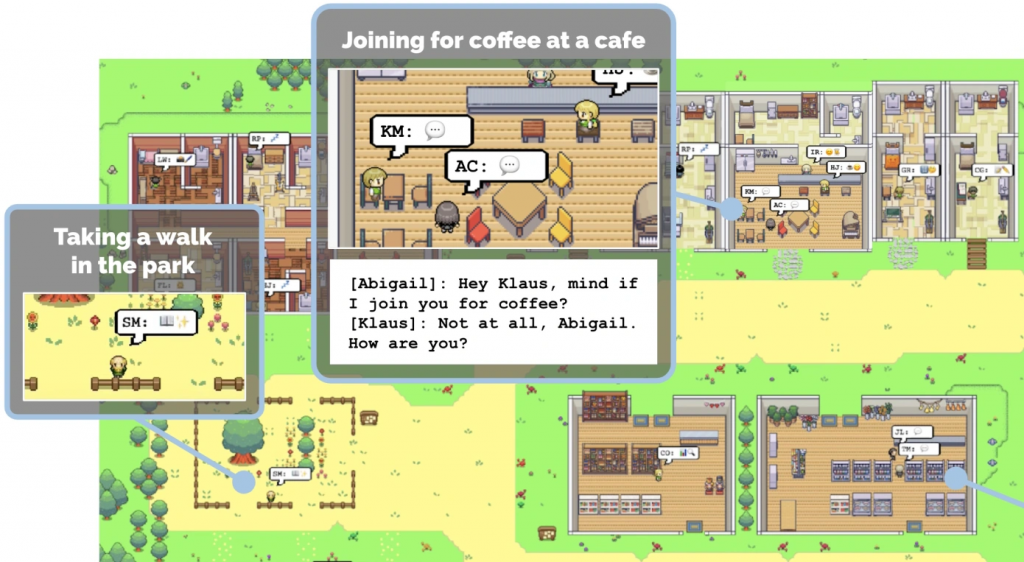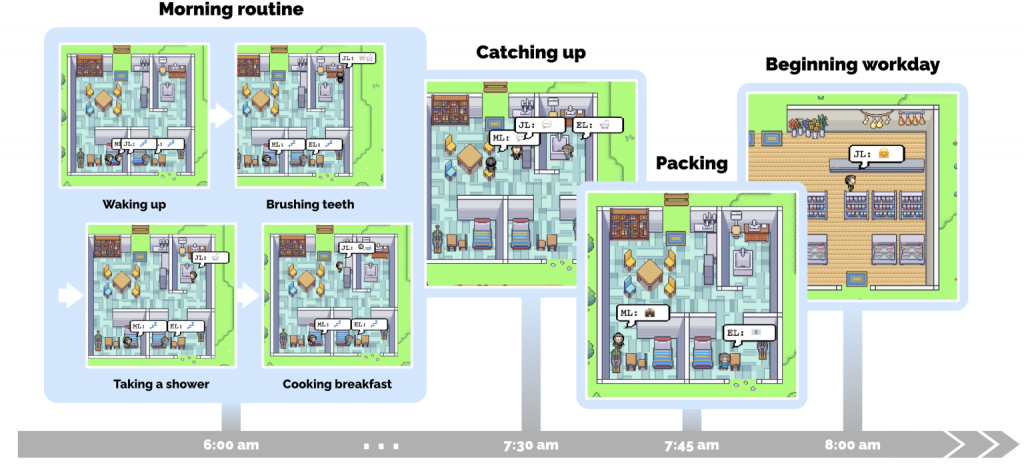Researchers from Stanford and Google conducted an experiment in which they filled a virtual town with AI-powered agents to observe their behavior. The purpose of this experiment was to create a “believable simulacra of human behavior” using the latest advances in machine learning models. The result was the production of “generative agents” that could realistically respond to their surroundings.
While the agents appeared to be brushing their teeth and interacting with each other, the reality was that it was more like an improv troupe role-playing on a MUD than any kind of dangerous AI takeover. The agents’ actions were actually a result of multiple instances of ChatGPT conversing with each other through a complex and hidden text layer.

Although the paper describing the experiment has not been peer-reviewed or accepted for publication yet, it offers interesting insights into the possibilities of AI in generating believable human behavior.
The experiment involved creating 25 instances of ChatGPT, each representing a person in a fictional town. Each agent was prompted with information about the person they were representing, and then asked to respond with their next actions given the time and circumstances. For example, if the John agent was prompted with the information that it is 8 AM and he just woke up, he would brush his teeth, kiss his wife, get dressed, and go to the kitchen. Similarly, the agent representing John’s son, Eddy, would also get up, brush his teeth, and go to the kitchen.
The agents were not physically in the same virtual space, but the overarching structure of the experiment informed them that the other person was in the room, along with further details like the table and stove.

Based on this, the chatbots interacted with one another in a standard, human-like way. Users could also input new scenarios or events, and the chatbots would respond accordingly. All this was done by providing the chatbots with the necessary information about each character and prompting them to respond appropriately to events, allowing for a virtual diorama.
Although the process is long and requires a fair amount of massaging, it has potentially huge implications for simulations of human interactions, particularly in gaming and virtual environments.
While it may not yet be a perfect system, the fact that it works at all is a significant breakthrough. Furthermore, the potential implications of this technology are vast, as it could be used to create more realistic simulations of human behavior in various settings, from gaming to virtual environments.

Even though the system is not yet practical for widespread use, it represents a promising step forward in the field of AI and natural language processing. As with any new technology, it is only a matter of time before it is refined and improved upon. We may one day see truly realistic virtual worlds populated by sophisticated generative agents.


